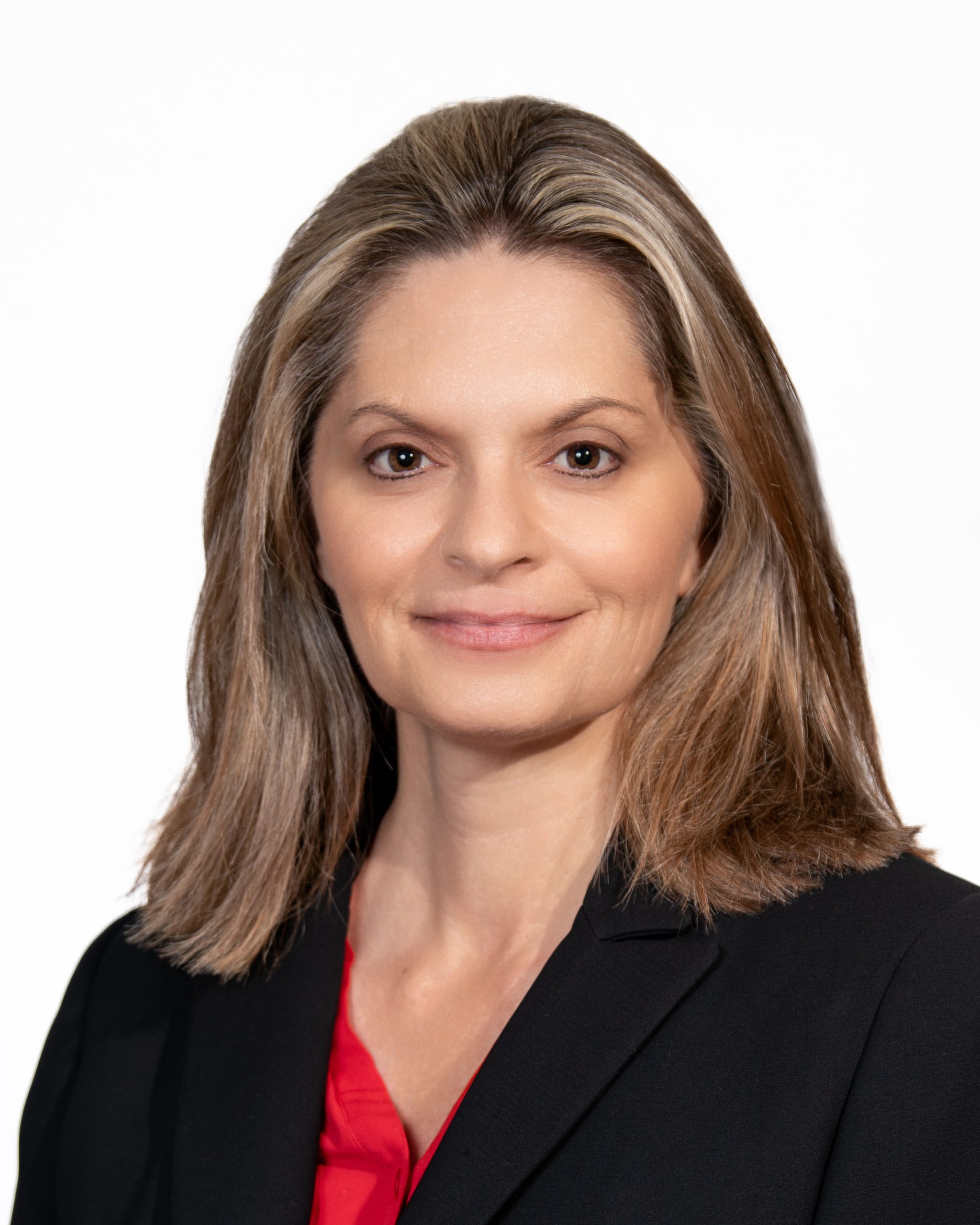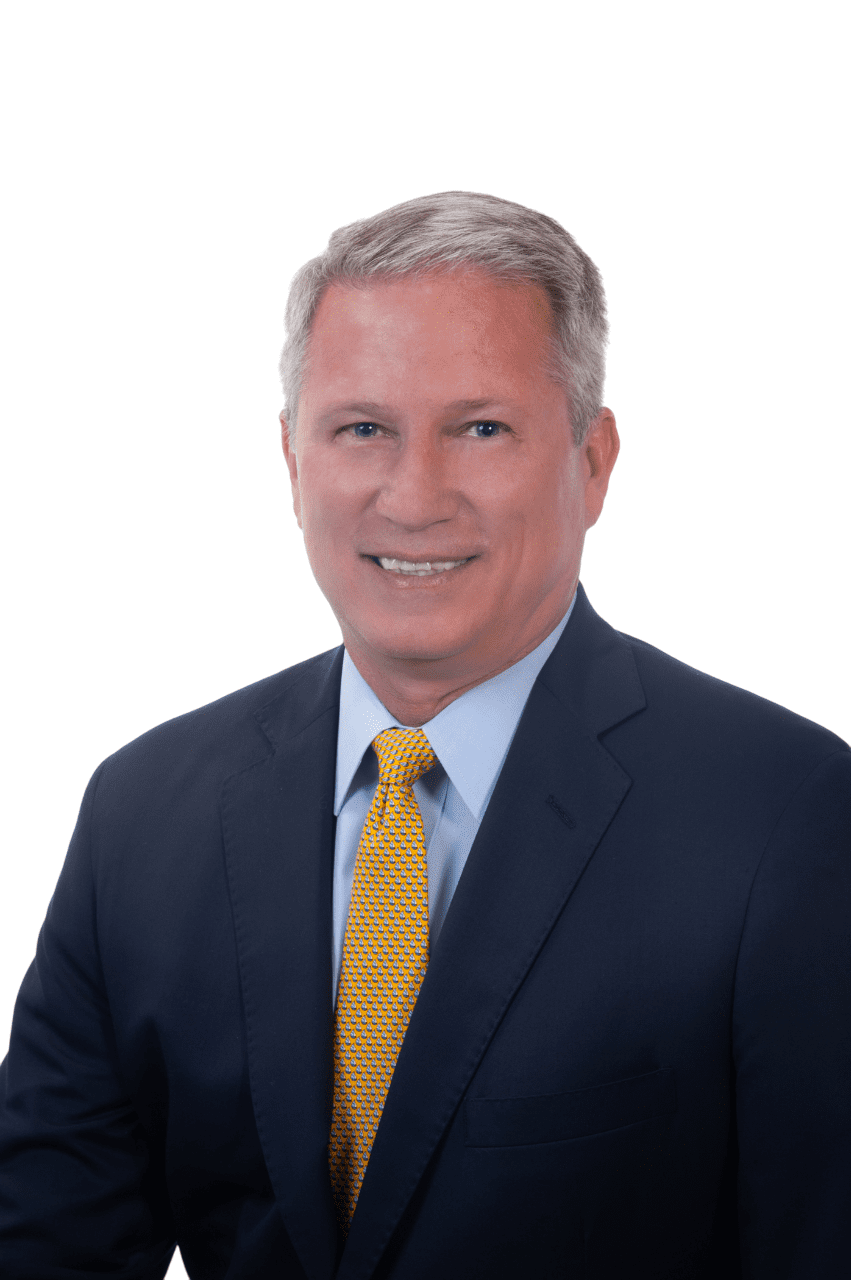SEC Rule 15b9-1 Expands FINRA Oversight
Insights into FINRA Membership Requirements
By Lisa Robinson, Jeff Gearhart and Susan Light
Subscribe to our original industry insights
Updated February 25, 2025
In February 2025 the U.S. Securities and Exchange Commission (SEC) announced ins intention to withdraw its appeal against a federal court decision that vacated the controversial expansion of the Treasury dealer rule. The rule requires proprietary trading firms, among others, to register as broker-dealers. In November 2024, a federal judge in the Northern District of Texas vacated the new rules on grounds that the SEC overstepped their bounds in establishing the new rule. This move signals a retreat from one of the most significant financial market structure overhauls in recent years, and a win for those who argued that the rule would do more harm than good.
Navigating SEC Rule Changes and FINRA Registration
The SEC (Securities Exchange Commission) has approved amendments to the Securities Exchange Act of 1934, Rule 15b9-1, requiring certain SEC registered broker-dealers to register with FINRA if they perform securities transactions on an exchange where they are not a member, unless they meet specific criteria. This includes most proprietary trading firms. FINRA has since adopted a short-form membership application process for firms that have been a member of a national securities exchange with which FINRA has had a regulatory services agreement for the 12-month period prior to August 23, 2023.
The SEC also approved Exchange Act Rules 3a5-4 and 3a44-2 requiring “de facto market makers,” market participants who engage in certain activities, to register with the SEC and become members of a self-regulatory organization.
Updated For 2025
Listen as our experts explore these rule changes, including what it means for the firms who must comply, the FINRA registration application process, challenges non-broker dealer entities may experience adapting to FINRA membership, and how FINRA has historically handled rule changes involving new membership.
Today’s podcast includes guest speaker Susan Light, Partner and Co-chair of Broker Dealer Regulation at Katten Muchin Rosenman LLP, former Senior Director of the FINRA Membership Application Program and Oyster expert Lisa Robinson, and Jeff Gerhardt, Oyster expert with over 30 years in banking and capital markets operations.
Becoming a FINRA Member goes beyond the registration process. From creating or enhancing written supervisory procedures and meeting net capital requirements to assigning licensed Chief Compliance Officers and FINOPs, firms need to have systems, procedures, and personnel in place before they begin the new member application.
Oyster Consulting’s experts are industry leaders and former regulators that have experience navigating the complexities of the New Member Application process. Oyster also has experienced industry practitioners in broker-dealer trading and compliance that understand this unique business and its associated regulatory requirements. Our experts are well-versed in all aspects of establishing and operating a broker-dealer as a FINRA member.
Transcript
Transcript provided by TEMI
Libby Hall: Welcome to the Oyster Stew Podcast. I’m Libby Hall, Director of Communications for Oyster Consulting. In August 2023, the SEC approved amendments requiring a SEC registered broker dealer to join FINRA if it performs securities transactions on an exchange where it is not a member unless it meets specific criteria. This includes most proprietary trading firms. In February 2024, the SEC approved new rules for market participants who engage in certain market activities requiring them to register with FINRA as well. In today’s podcast, our experts will do a deep dive into these changes, including what it means for firms who must comply, the registration application process, challenges non-broker dealer entities may experience adapting to FINRA membership, and how FINRA has historically handled rule changes involving new membership. With me today are Sue Light, Partner and Co-chair of Broker Dealer Regulation at Katten Muchin Rosenman LLP and former Senior Director of the FINRA Membership Application Program, Oyster’s expert Lisa Robinson, and Jeff Gerhardt, an Oyster expert with over 30 years in banking and capital markets operations. Jeff will be leading our discussion today, so let’s get started. Jeff,
Jeff Gearhart: Sue, Lisa, thanks for joining today. Really excited to talk about our topic, the recent rule changes from the SEC. Let’s just dig right in, and let’s start with the one that was I believe in the third quarter of last year, the rule change that’s eliminated the exemption for exchange members being able to trade on different exchanges. Looking for a quick update on maybe the impact. How many firms are affected and how they’re handling it. Sue, I don’t know if you have any thoughts on that.
Susan Light: Thanks, Jeff. It’s an important amendment of the rule by the SEC that will change the life for several prop trading firms. Just as a way of background, it used to be that prop trading firms that did not have any customer accounts could join, obviously the SEC, but then another self-regulatory organization, CBOE (Chicago Board Options Exchange), New York Stock Exchange, NASD, and did the regulation for them through regulatory service agreements, but they weren’t members of FINRA. But with this new rule to an SEC Rule 15b9-1, the SEC changed that because they wanted more consistent rules, behaviors, and oversight. And now virtually every prop trading firm needs to become a member of FINRA. And the rule really is if you do any trades on an exchange that you are not a member, for example, if you’re a CBOE member, but you also trade on NASDAQ, which virtually every prop trading firm does, then you do need to become a member of FINRA. There’re a couple other narrow exceptions, but for the most part, that means that almost every prop trading firm is now going through the process of having to register with FINRA. Lisa, do you want to tell us some of the specifics about that?
Lisa Robinson: Yeah, sure. Thanks, Sue. So, FINRA adopted a short form membership application process for firms that must become registered under this amended rule. And the details of that short form application process are outlined in FINRA Regulatory Notice 23-19. So, in order to be eligible for this short form process, the firm must have been a member of a National Securities Exchange where FINRA has an RSA, like Sue was mentioning, for the 12-month period prior to August 23rd, 2023. In addition to offering the short form process, FINRA also provides for a waiver, a partial waiver of the application fee for firms that go through this process. So, keep in mind the new member application fee for regular firms, it’s all based on the size of the firm. So, the regular fee is anywhere from $7,500 up to $55,000. So, it is good that FINRA’s offering this partial fee, which is half of what the firm would pay for a full membership review process.
Susan Light: I saw that the short form is really short. It’s two pages, basically. Name, rank, serial number. Does that mean that the application itself will be easy?
Lisa Robinson: <Laugh> That’s great that you mentioned that Sue, and I was going to touch upon that. It’s a short, short firm <LAUGH> form, but FINRA does put a few disclaimers in the reg notice that they could still come back with questions. And from what I understand, we’ve spoken with firms who filed this like three sentence short form and then FINRA came back with questions. FINRA reserves the right not only to ask additional questions but also if you make any material changes to your existing business or want to deviate or add other things, that’ll kick you out of the short form process and you’ll be diverted to the full new member application process. So short doesn’t really mean easy over and done. You still might need some help navigating the process.
Jeff Gearhart: So, another question. You file the short form, you get approved, you’re subject to all the new FINRA rules. So they might not ask about them during the application process, but that doesn’t matter. You’ve got to be up and running as the full deal broker-dealer.
Lisa Robinson: Yeah. You’re still subject to all the rules, registration requirements, trade reporting, all that stuff. I do want to mention that you should also touch base with FINRA to make sure that for trade reporting you have all the right connectivity and stuff. There’s an email and a phone number. It’s FINRA operations@FINRA.org to make sure you get the connectivity. But yes, Jeff, all the rules apply. They’re just giving you this alleged short form process.
Susan Light: It’s important that firms know the deadlines. FINRA is already accepting both long and short applications, but if you want to avail yourself of the short form, it needs to be in by May 9th. And the compliance date that the pro firms need to be members of FINRA is September 6th.
Lisa Robinson: That’s right.
Jeff Gearhart: Right. And I think that’s a really good update. Perhaps what might be a bigger deal is the rule announcement that just came out at the beginning of February where the SEC approved the new rules for market participants who engage in certain activities to have to register with the SEC and become FINRA members. By the way, it does say become a member of a self-regulatory organization, but it’s pretty much FINRA is it. Right?
Lisa Robinson: FINRA’s all they got. Right.
Jeff Gearhart: So, I don’t know if you can provide an update on that. I know it’s pretty fresh, and a lot’s going on right now, but what’s going on with this rule change?
Susan Light: Oh, a lot, Jeff, and we are deeply immersed in it – talking to clients all day, every day. So basically, the SEC adopted two standards in these two new rules to determine whether an entity is buying or selling securities as part of its regular business that results in them not being a trader, which was always an exception to being registered. But now it makes them, if you trade enough, it makes that entity into a broker-dealer. And so, the SEC is looking at entities that are defacto market makers. So there are two standards. I’ll just talk a little bit about those two standards that sound very similar, and one is almost eaten up by the other, but nonetheless, the SEC is counting it as two. One is the trading interest factor, and the other is the primary revenue factor.
So the trading interest factor, an entity is a dealer. If that entity engages in a regular pattern of buying room selling securities, that has the effect of providing liquidity to other market participants. If that entity is regularly at or near the best available price on both sides of the market in that security and it’s represented so that it’s accessible to other market participants, passive actives trading strategies will, or both can fit into that if it leads to them having the effect of providing liquidity. Now the second standard is the primary revenue standard, and that entity would also be considered a dealer if they engage in a regular pattern of buying and selling securities to provide liquidity to other market participants by earning revenue primarily from capturing the bid ask spreads or incentives for providing liquidity. So, we can see the theme. The SEC is interested in entities that are active in the marketplace because the SEC feels that any entity that is providing liquidity and whose regular course of business is buying and selling securities and providing liquidity to the marketplace and active in the marketplace should be registered as a dealer and under the same set of consistent rules.
Jeff Gearhart: Sue, I’m used to thinking of this in terms of government securities dealers, a lot of proprietary trading shops that trade treasuries versus futures or something of that nature. This doesn’t narrow the scope to government securities, right? This is everything.
Susan Light: No, you’re absolutely right. In fact, it was two new rules. The SEC passed one for government securities dealers and the other for the rest of the population. So the entities caught up in this, the ones that are calling us up all day long are hedge funds, private equity funds and other entities that never even considered themselves in the broker dealer world previously.
Jeff Gearhart: Okay. From my perspective, I think this is a bigger lift because those firms are very knowledgeable and great at trading and not on running a broker-dealer or in the prior rule change, at least they had an infrastructure in place.
Susan Light: You’re absolutely right. They were used to being regulated by a securities regulatory entity.
Jeff Gearhart: I’m jumping around a little bit here, but what do you think some of the big impacts are going to be to these the broker-dealer life versus the non-broker dealer life?
Susan Light: There are huge, huge implications. I’ll just name some of them, and Lisa already named some of them when she talked about the prop trading firms becoming members of FINRA. But they’ll need enhanced supervisory procedures. They’ll undergo frequent regulatory examinations. They’ll become subject to FINRA’s enforcement process. They will be assigned a FINRA risk monitoring analyst that will be their new best buddy, that will be interested in all sorts of their business. They’ve got to report trades, and that’s one set of areas. Another set of areas are organizational structure. They’ll have net capital requirements that will have significant impact on how often investors can withdraw funds. They’ve got to have certain supervisory structures with certain entities that have passed regulatory registrations and licensing exams. They need to have certain officers, chief compliance officers, AOP principals. So these are just some of the areas that the funds will have to start to comply with if they are in the dealer world.
Lisa Robinson: Yeah. And I just want to add, Sue’s exactly right. And where some firms might get caught up, all of these things have to be put in place in order to become a FINRA member. So, when they go to apply for FINRA membership, they have to demonstrate that they can begin work and be in compliance on day one. So, there are FINRA membership rules which cover all these things that Sue just mentioned, and a firm has to demonstrate they meet each of those standards of admission before FINRA will approve them for membership. So, these firms need to be prepared before they go to FINRA and have all these systems, procedures, personnel in place so that when they go to FINRA with their membership, it’ll be a more efficient process.
Jeff Gearhart: They essentially have to be demo ready, correct.
Lisa Robinson: That’s right. At time of filing. Their systems have to be ready for FINRA to review and assess.
Jeff Gearhart: Right. We’ve worked with some firms prior to this rule who have wanted to become broker dealers for various reasons, and, I’ve found it’s been an education, a bit of a learning curve. They’re used to moving capital around freely as needed, where you can’t necessarily do that. And the degree of oversight, simple trade supervision becomes a daily weekly task versus we’re just checking the limits occasionally, things of that nature. Can you provide some perspective on the timing of the new rule implementation?
Lisa Robinson: Yeah, so the effective date of the rule is 60 days after the rule is published in the federal register, which I understand some are speculating may be around mid-April 2024. Then it’s a year for the final date for firms to register as a dealer or government securities dealer should be around mid-April 2025. I would expect that FINRA’s going to issue guidance either in the form of a regulatory notice or some form of communication soon after the rule is put out there in the federal register just to give some guidance to firms on next steps and how to register.
Jeff Gearhart: We talked a little bit about fast track. Any perspective that seems like a tougher challenge here.
Lisa Robinson: Ok, so this overview fast track with the membership group has been an expedited process for certain firms. You know, there’s a lot of talk, I don’t know if this is something that FINRA membership group can fast track, so to speak, because these in large will be unknown entities for FINRA. And of course, overall FINRA’s concerned about investor protection first. But I do understand that FINRA will be looking to help make it a more efficient process for firms. I just got an email this morning that for the high frequency, the prop trading firms, FINRA’s going to have a webinar shortly to help firms go through the process, answer any questions. I would imagine FINRA will do the same for this rule proposal as well.
Susan Light: I agree with Lisa. I think this is really tricky for FINRA because they’ll want to expedite it because the SEC has put in this rule, and if it goes into effect a little bit more than a year from now. They’ve got a lot of entities that need to be registered by then. And FINRA won’t want to be the sticky wicket in this. On the other hand, as Lisa mentioned about investor protection, they’ll feel that they’ve got a responsibility to understand the business and make sure that the firms are doing it right. It’s not necessarily only that FINRA will be looked to say, should this new dealer be in or out? Should we allow this firm to become a member? That’s might not be their trickiest question. The trickiest question is, does the firm have the infrastructure now to be able to follow all of FINRA’s rules?
And we know that Lisa and I have been doing this a long time, new member applications, and it is difficult for the most eager of firms to get themselves ready with all the new rules and financial requirements and systems and technology and cyber and supervisory procedures to be ready for FINRA’s approval. And here’s a firm that <laugh> is being dragged in. So FINRA will really require a lot of examination and inspection to make sure that they think that the firm is appropriate and ready. And that’s going to take some time for FINRA to do that. On the other hand, I think I agree with Lisa’s assessment that they’ll try to make it as efficient as possible. They’ll assign people that will really learn this area. Yeah. And will do it as quickly as possible.
Lisa Robinson: Yeah. And that’s what I’ve seen in the past, Sue, is FINRA certainly has the resources to pull in additional staffing to help review these applications that are going to come in. They could have a dedicated team assigned just to work on these specific applications, which will help build bench strength in this area. So FINRA definitely has the means to help make it as efficient as possible without sacrificing investor protection.
Jeff Gearhart: So, so FINRA can step up, but the firms are going to have to step up. They’ve got the bulk of the lift – everything from a CCO to FINOP to WSPs. Exciting topic, I know, but there’s a lot to do there.
Lisa Robinson: There’s a lot to do. And that’s why, what Sue is saying, Sue and I have these years of experience and working with new member firms and getting them ready for the FINRA application process. And I think these firms are really going to need some assistance going from what they’re used to now, and going into this heavily regulated environment. They’ll need some guidance.
Jeff Gearhart: Right. So, they’re good at trading and running their business. They’re not good at the shell of the broker-dealer or, they might not have been exposed to it. They could become good at it. It’s just new. They could be good <laugh>. Yeah. I just want to clarify one thing too. You know, FINRA’s role on investor protection, a lot of these firms are proprietary trading, so they’re not going to carry accounts, that doesn’t matter. You’re still subject to the rule, even if you’re only trading for yourself.
Lisa Robinson: Yes. That, that’s right. You’re still subject to FINRA rules and being in compliance and all that stuff.
Jeff Gearhart: There’re just extra rules if you’re going to carry client accounts <laugh>.
Lisa Robinson: Yeah, yeah, certainly. Right.
Jeff Gearhart: Okay. The rule is not without controversy obviously, and I know it’s way early in the ball game, but Sue, do you think there’ll be legal challenges? Will that slow the process down at all or anything like that?
Susan Light: I do think there are likely to be legal challenges. There were two SEC commissioners that dissented. I think that they provide a roadmap for entities that want to sue. But it will not slow the process down. I think that the SEC has rolled this forward. It has passed, and the firms would be at their peril if they try to sit by the wayside and wait for the rule to be struck down. It might be, or it might be modified, but I don’t think firms can wait and see what’s going to happen. I just wanted to say one more thing about firm’s readiness for the new member application. These firms are very sophisticated, as Jeff said, they’re experts in trading, and they do have some of the most important infrastructure that any broker dealer would need. They’ve got information barriers, they’ve got financial controls, they’ve got risk monitors. So it’s not like they’re naive and would have no clue how to do this. It’ll be a new world for them with some of the restrictions, but they’re, for the most part, really excellent sophisticated firms.
Jeff Gearhart: Okay. Yeah, I definitely agree with that observation. It’s just putting that activity in the shell of a broker dealer. So, the rules out there, there might be challenges, but the fact is you’re going to have to deal with it. Maybe we could give a little bit of perspective about the broker dealer application process. Just a high level of what it takes, maybe even current time estimates, knowing that there might be a dedicated team. It’s always a challenge. So that has to be a question of a lot of people. What is the process?
Lisa Robinson: Yeah. So again, I think readiness is really important. Before you actually go and submit an application to FINRA to become a broker dealer you should have everything in good order. You have to demonstrate that you meet the standards of admission as outlined in the FINRA membership rules once you hit the submit button on the application. Overall FINRA has 180 days to render a decision. FINRA can ask for additional time to go beyond the 180 days, but from what I’m hearing from clients and from FINRA, they’re really trying to keep it to that 180. So, they’re doing what they can to try and move applications along. So, from the time you file through the 180-day process, there are 30-day intervals where FINRA will send a request letter to a firm. The firm has 30 days to respond, then it kind of goes back to FINRA.
So, what FINRA is trying to do now is to truncate those turnaround times. So FINRA may call me and say, hey, do you think your firm could give the response in 10 days instead of 30 days? And in most instances, of course, clients are able to do that because they want to get approval as quickly as possible too. So, we can’t control how long FINRA takes on their 30-day clock. I find that they’re still sending the request letters out around the 29th or 30th day. But we do work to get our responses out pretty quickly. And so that’s basically the timing. And of course, the more efficient you are getting things ready, that also reduces the amount of questions that FINRA will have throughout the process. So, we all work to cut down that 180-day turnaround time. Sue, has that been your experience?
Susan Light: That is exactly my experience. FINRA does a preliminary assessment of readiness as soon as they get the application and they deem you ready or not ready, and then they’ll pass it on if you’re ready to the main reviewer. My best advice to anyone going through this process, and I know Lisa would agree because she and I did this, even when I was in the defense side and she was at FINRA leading this department, is that if you see a roadblock, if you see that FINRA is asking the same question that you just answered, if you see that you think they don’t understand what’s going on, then pick up the phone and call the examiner. Because it’s not that they don’t understand what’s going on, there’s a disconnect. They either won’t approve something that you’re doing, or they don’t understand what you’re saying. But giving the same answer again, which is what I have seen some firms do, does not speed up the process. Yeah. So I’ve had tremendous success when I’ve been hired after a firm is already at a roadblock, and I just pick up the phone and call the department and I say, we want to work with you to make this happen. How do we do that? What’s going on? What is the roadblock?
Lisa Robinson: Yeah, I totally agree with Sue. It worked when we were over there at FINRA, and it works now that I’m on the consulting side. Just a quick story. I had an examiner ask the same questions twice in a row, and I had already provided the answer up front in the business plan, and I was just scratching my head. So I called the examiner and I’m like, am I saying something wrong? Should I be saying this different? And he said, oh my goodness, I didn’t even realize I already asked you that. I’m so sorry, <laugh>. So definitely picking up the phone and just to talk about things and maybe it’s just a misunderstanding or, the examiner didn’t realize, because they’re juggling a lot of work also on their plate. So, giving them a call and just asking your question and talking through things will definitely help the process, and it helps you build that relationship with the MAP staff.
Susan Light: There’s a lot of interactions with FINRA that end up being difficult ones, whether it’s through an examination process that they’re finding something you think you did right, and they did wrong, or the enforcement process. But this is not meant to be argumentative. This is meant to be collaborative. The firms want to become a FINRA member. FINRA wants good members, they just want to make sure it’s done right. And the firms want to make sure that they’re doing it right. the way FINRA wants. So, it might be difficult, but it shouldn’t be antagonistic. And when firms go into it viewing FINRA as the enemy here, then it’s not as successful a process as when you think of them as a partnership at this stage of the process.
Lisa Robinson: Yeah, I completely agree, Sue. That’s exactly right.
Jeff Gearhart: One of the questions I was going to ask, what are the roadblocks or the obstacles, but I think you’re both nailing it. Communication, being upfront and then you’ll get the guidance you need. One question. The team you’re working with, the MAP team, is your assigned risk analyst a part of that team as well, or assigned once you’re approved?
Lisa Robinson: So, the risk monitoring analyst gets assigned once you’re approved for FINRA membership. And then as Sue pointed out, they become your FINRA point of contact going forward. Okay, but they are also involved in the review of your new member application. Right. Because they want to learn about this new business that they’re going to be responsible for the oversight of from the FINRA side. So they get assigned during the application process. And that’s who you become very close with once you’re approved for membership.
Jeff Gearhart: Okay. In some of my prior roles as the head of a broker dealer, we worked very hard to maintain a relationship with FINRA and our risk analyst. The whole idea of no surprises and communication. I think you guys are really emphasizing that. Look, I think this was very informative, very helpful. Any parting thoughts or comments? I’m sure there’s a lot more to come and hopefully we can be back in the near future with updates. But any last thoughts?
Susan Light: I hope the SEC puts out more guidance so that firms can determine more accurately if they’re in scope of auditor or out or out of scope.
Lisa Robinson: Yeah. And I’m really happy to see that FINRA’s also putting out additional guidance, whether it’s Reg notice or these webinars to help these non-member firms transition over to FINRA. So, I think it’s all positive things.







